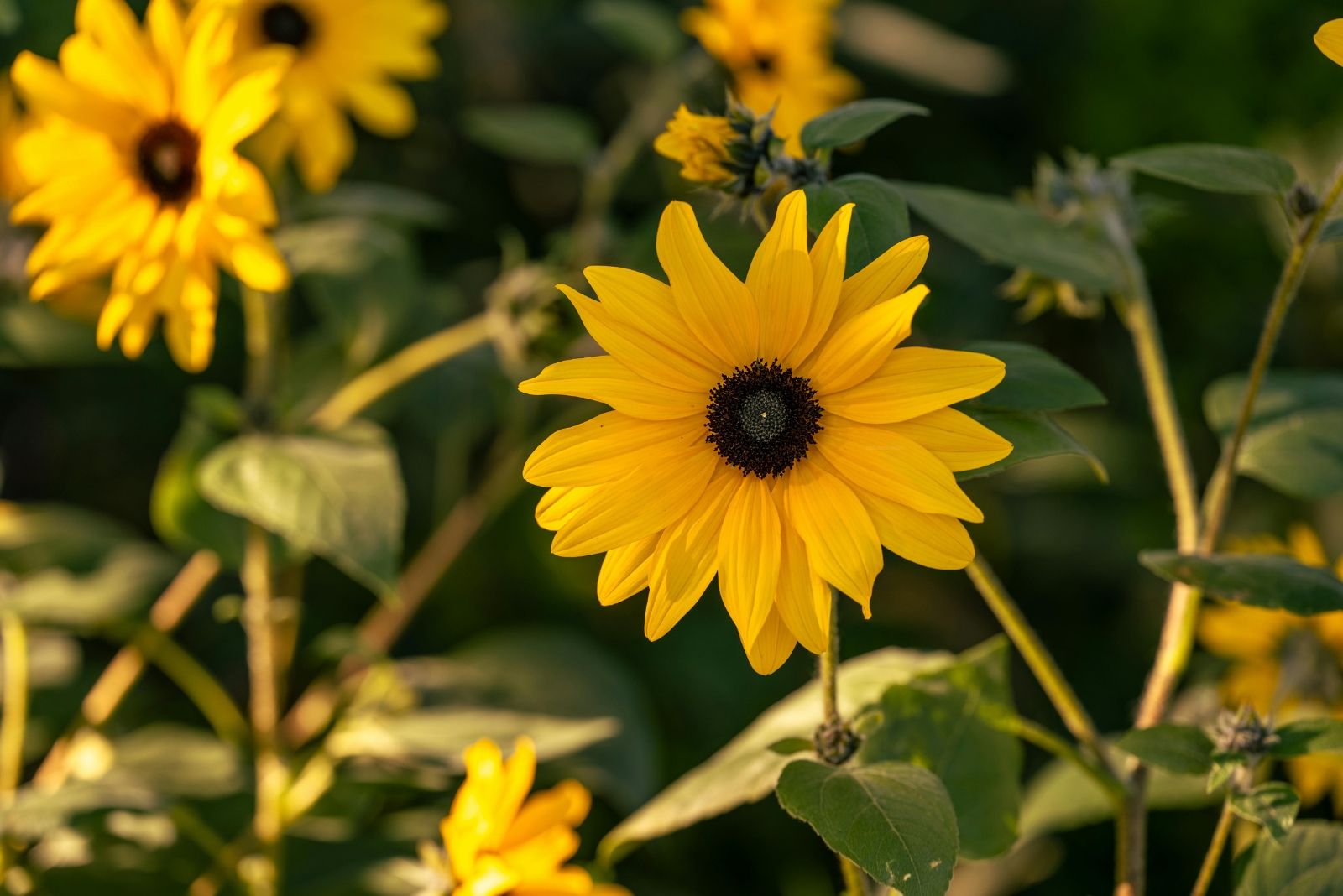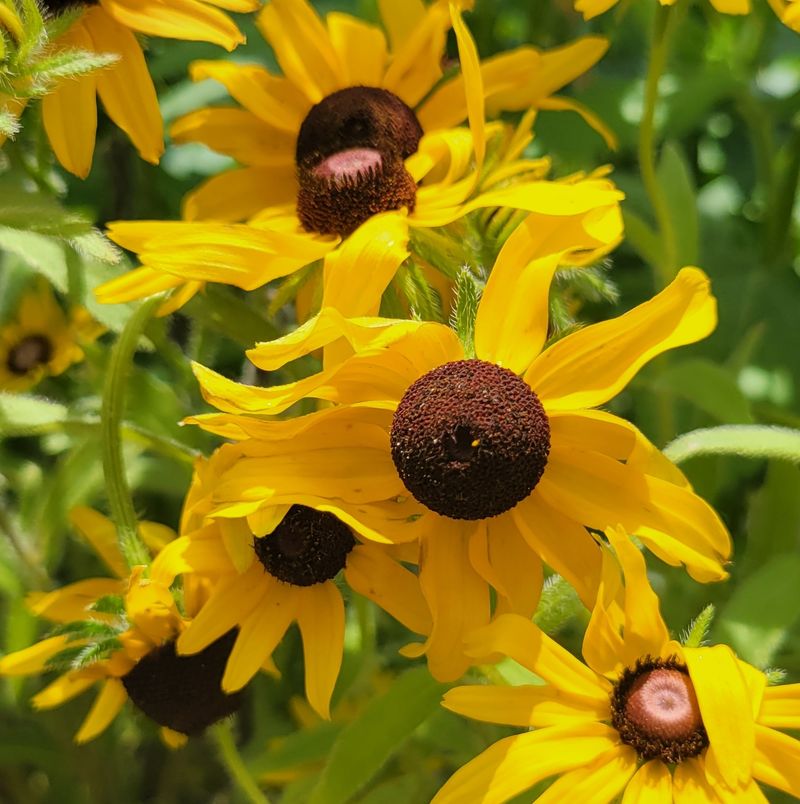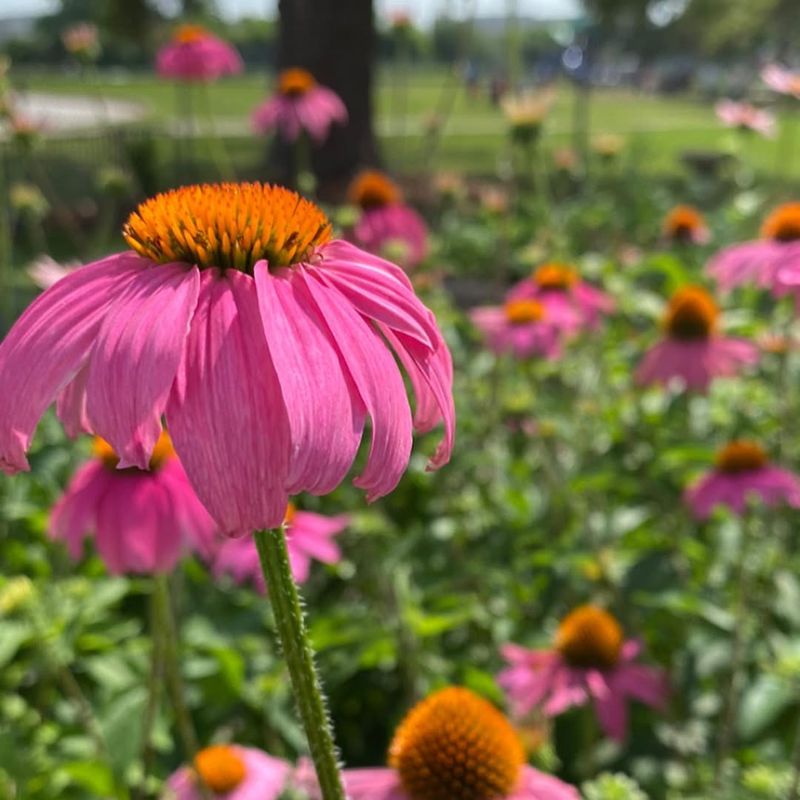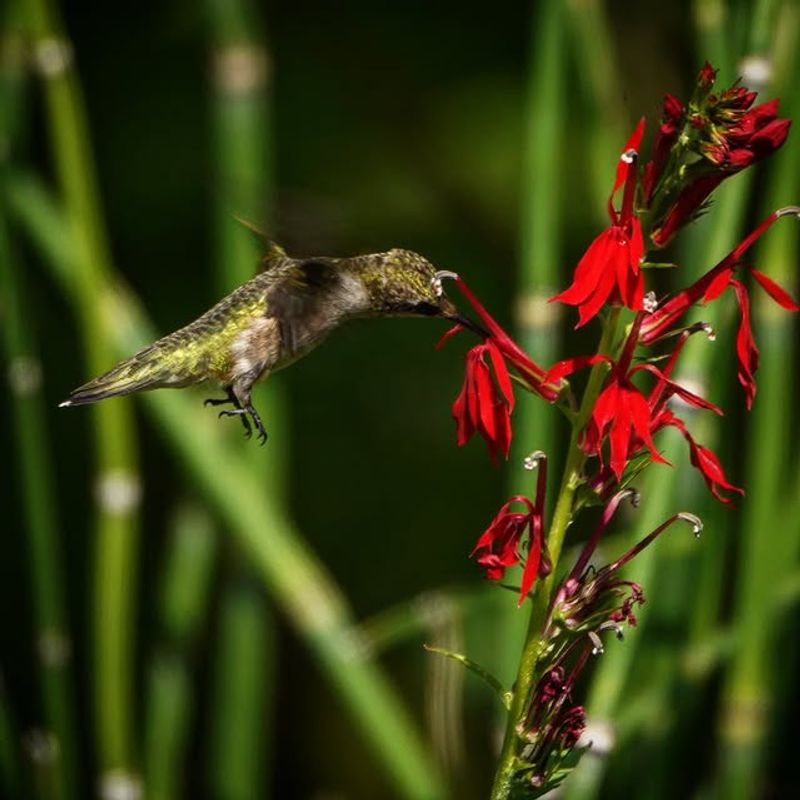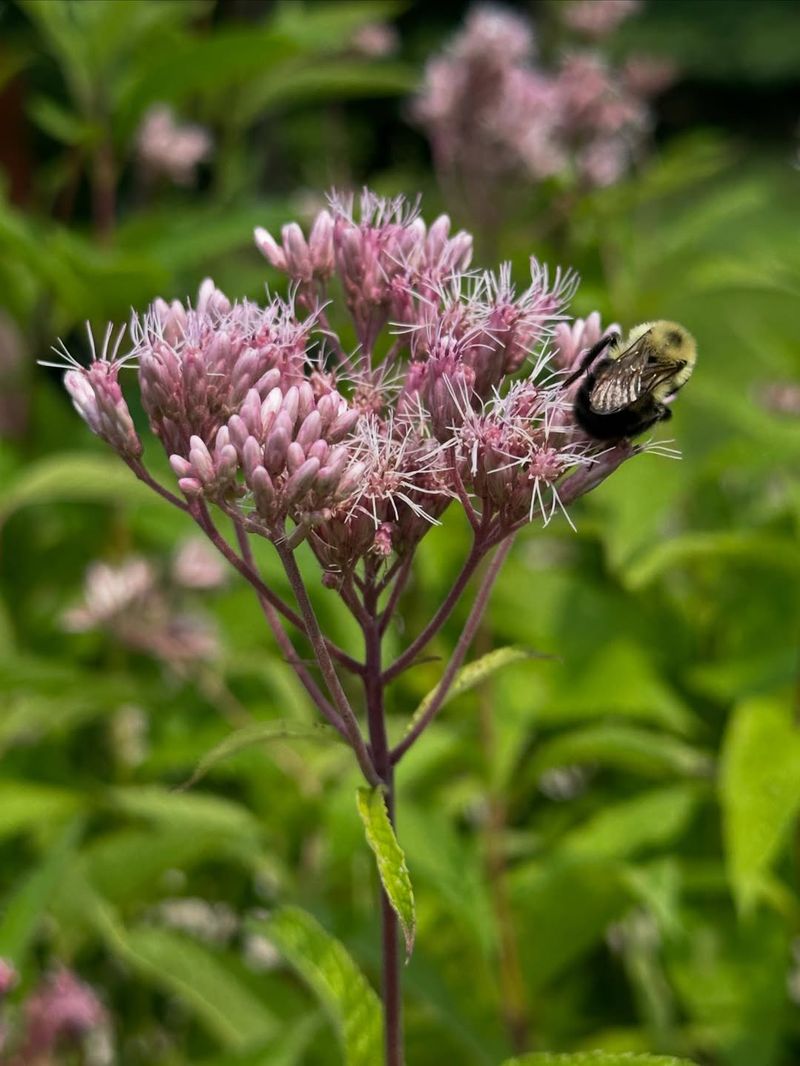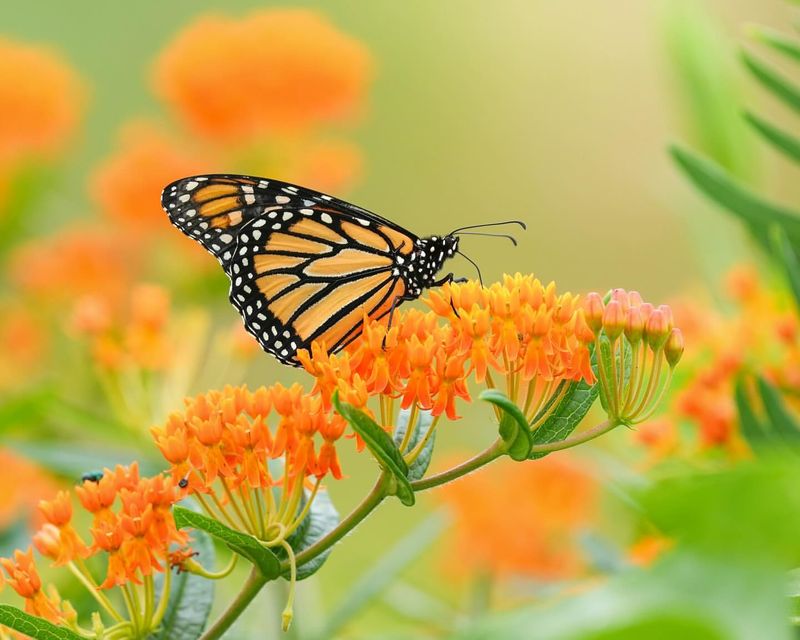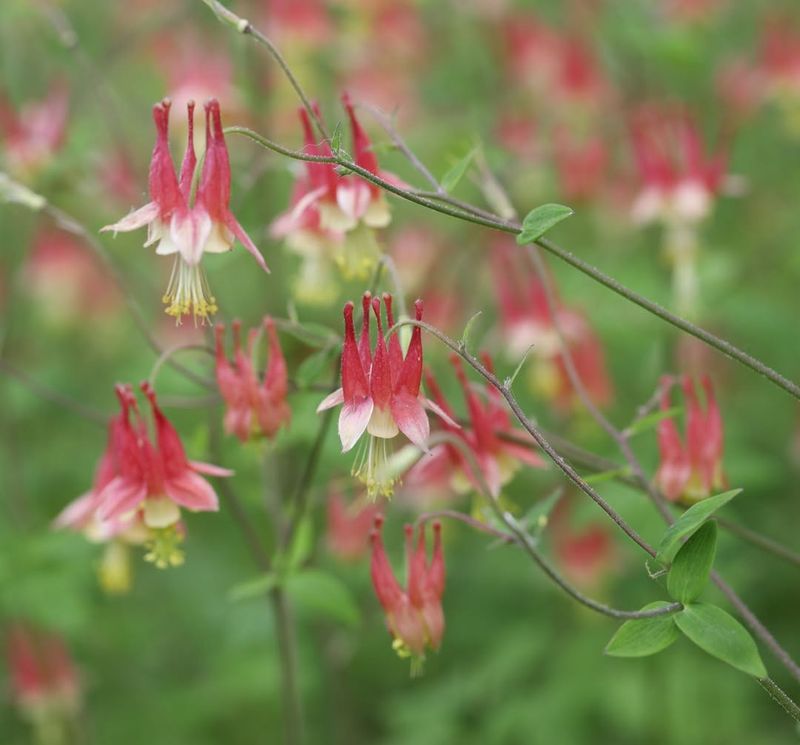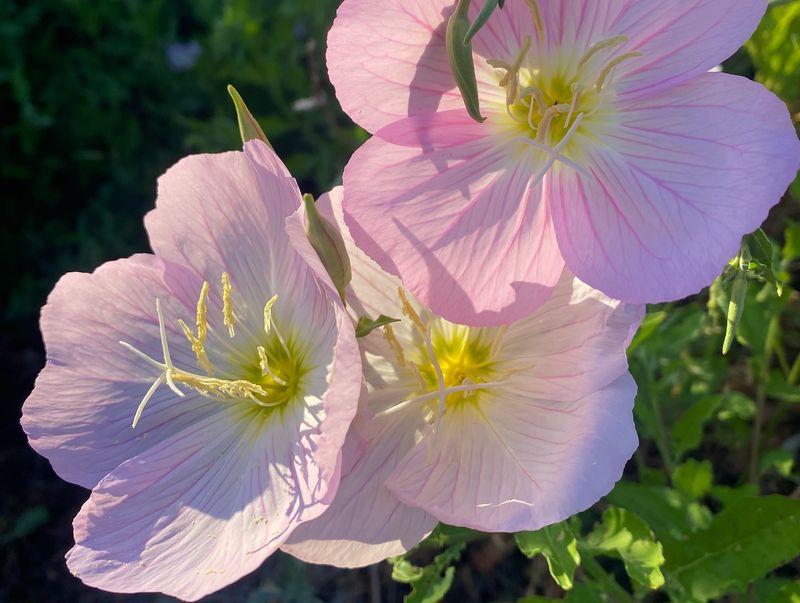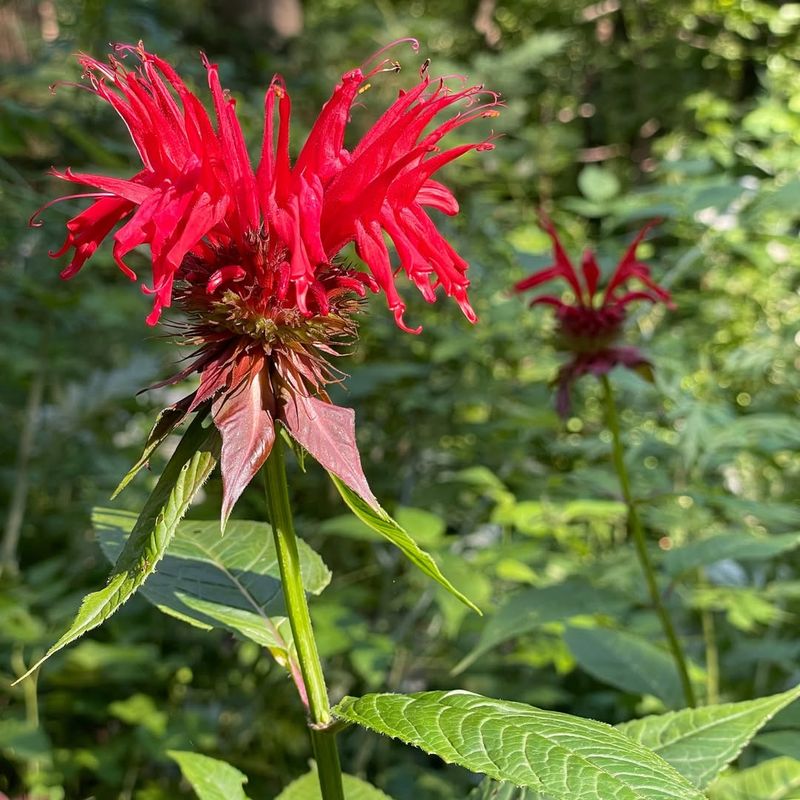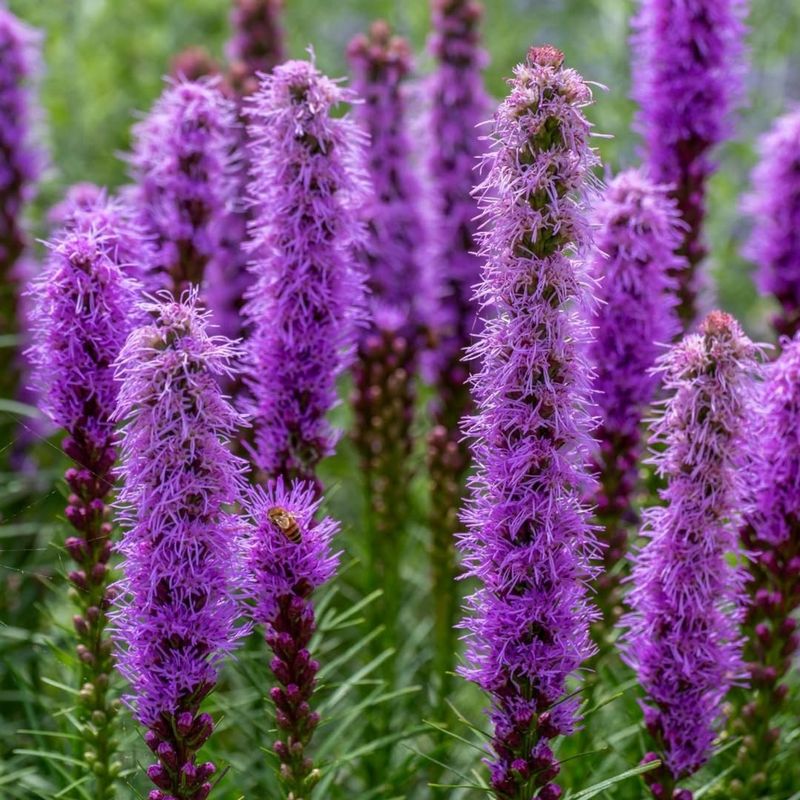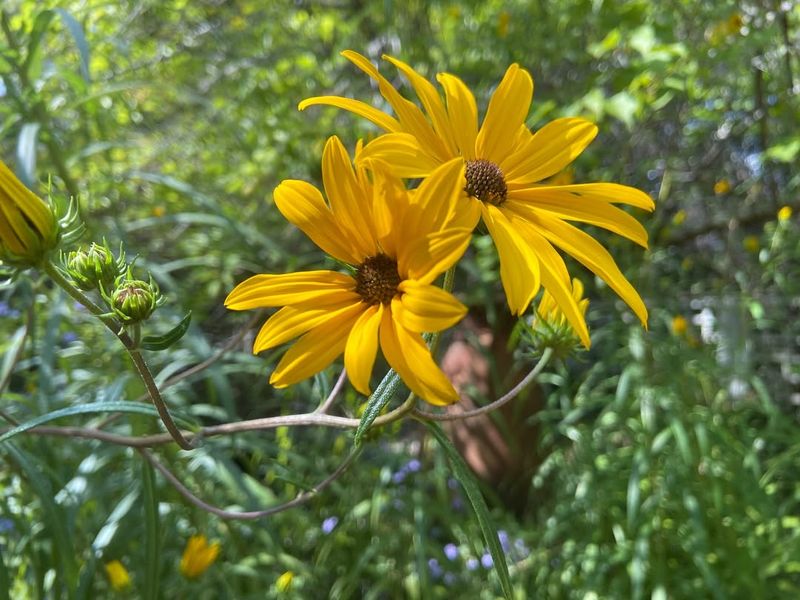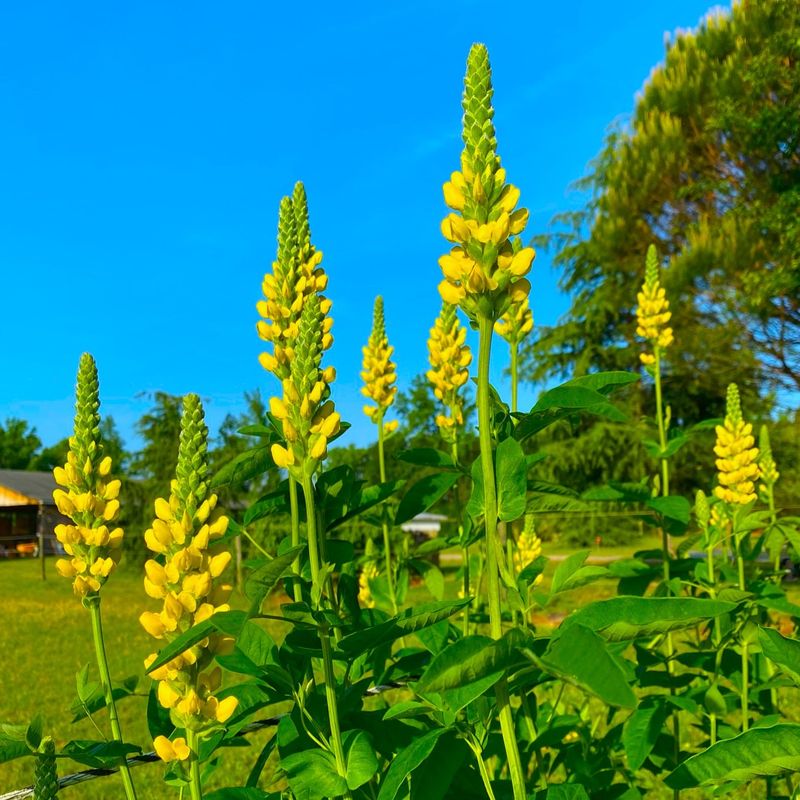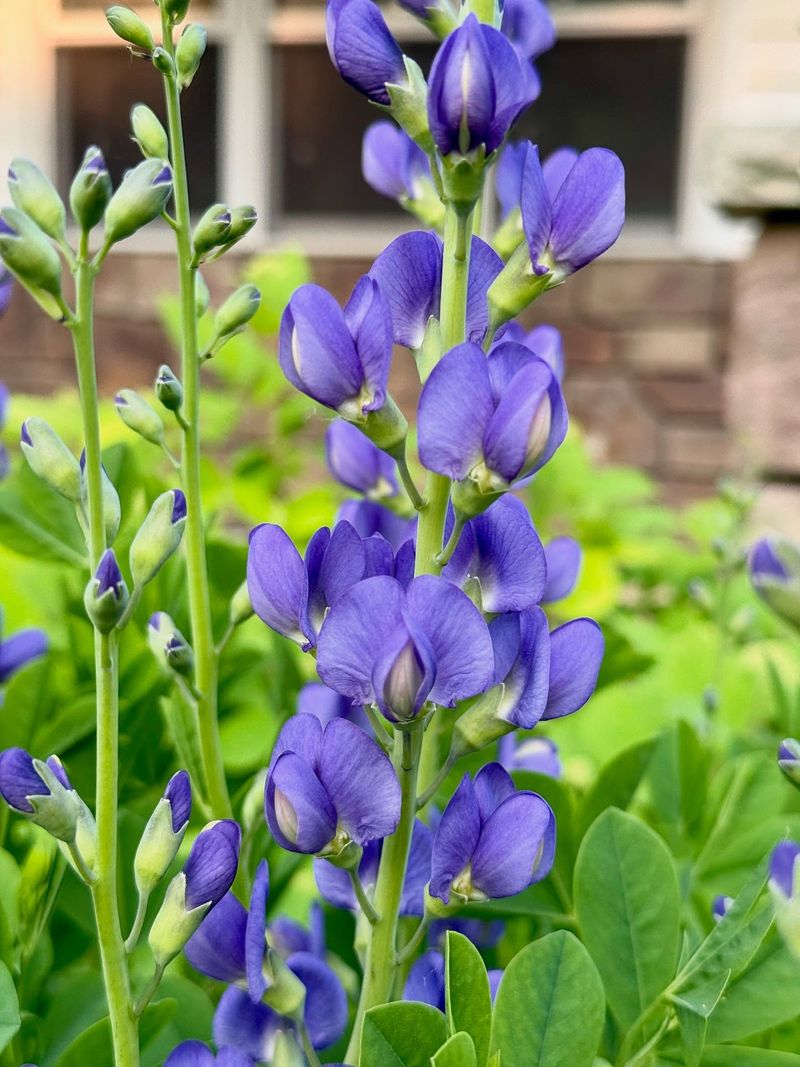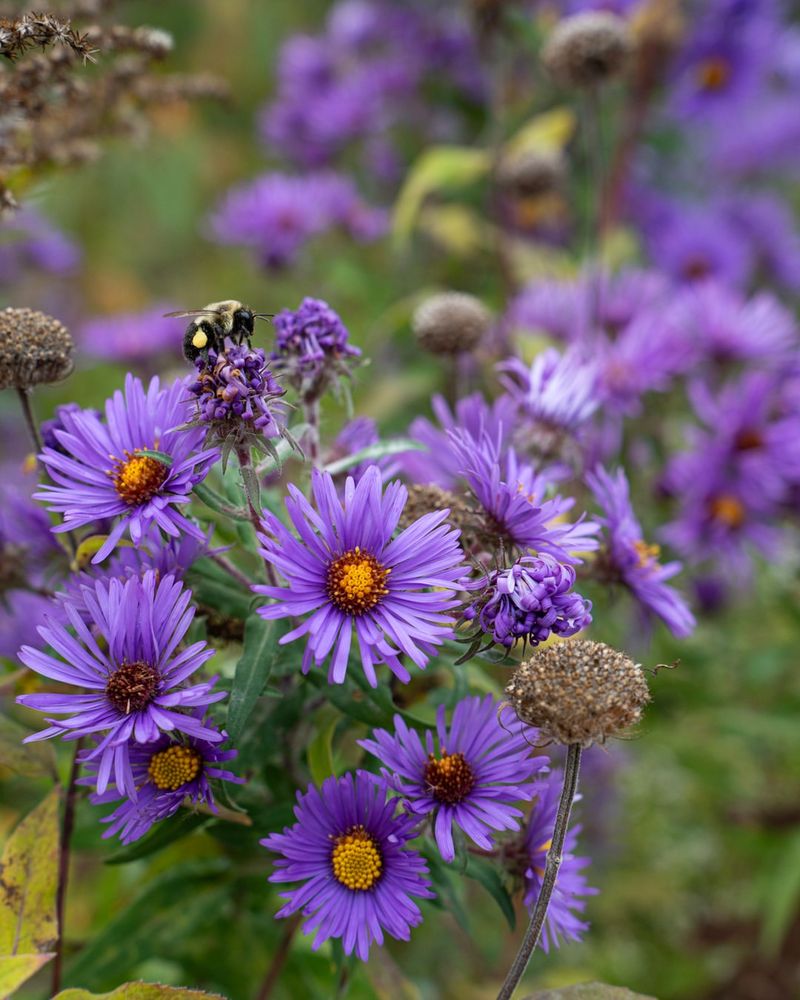Fall is the perfect time to collect flower seeds from your North Carolina garden. Saving seeds connects you to the full cycle of plant life and saves money on next year’s garden.
With a little know-how, you can preserve your favorite native blooms and share nature’s bounty with friends and family.
1. Black-Eyed Susan
Vibrant gold petals surround a distinctive dark center, making these cheerful natives impossible to miss in any garden. The seed heads turn dark brown when ready for harvest, usually by late September.
Simply snip the heads, place them in paper bags, and hang upside down in a dry location. After a few weeks, gently crush the heads to release the tiny seeds for storage in labeled envelopes until spring planting.
2. Purple Coneflower
Native echinacea stands tall through summer heat, rewarding gardeners with medicine and beauty. By fall, those dome-shaped centers transform into spiky seed heads filled with treasure.
Wait until the heads are completely brown and dry on the stem. Birds love these seeds too, so harvest before your feathered friends claim them all! Store in cool, dry conditions to maintain viability for up to four years.
3. Cardinal Flower
Cardinal flower’s brilliant red blooms attract hummingbirds all summer long in North Carolina’s moist areas. After flowering, small pods develop containing dust-like seeds that require careful handling.
Allow the pods to turn brown but harvest before they split open and scatter their contents. The tiny seeds benefit from cold stratification before spring planting, mimicking winter conditions to improve germination rates.
4. Joe-Pye Weed
Rising majestically in moist meadows, Joe-Pye Weed’s fluffy pink flower clusters transform into feathery seed heads by October. Named after a Native American healer, this plant reaches impressive heights of up to seven feet.
Cut seed heads when they appear dry but before winds disperse them. Shake the heads in paper bags to collect the downy seeds. Though somewhat challenging to germinate, success rewards gardeners with butterfly magnets that return year after year.
5. Butterfly Weed
Monarch butterflies can’t resist the bright orange flowers of this milkweed relative. By September, distinctive pointed seed pods replace the blooms, eventually splitting to release silky-tailed seeds.
Harvest pods when they begin to split but before seeds escape on the wind. The milky sap can irritate skin, so wear gloves during collection. Seeds require cold stratification, making them perfect candidates for winter sowing in milk jugs.
6. Eastern Columbine
Delicate nodding blooms give way to upright seed pods resembling tiny lanterns. Native to woodland edges across North Carolina, these spring bloomers produce seeds by early summer that remain viable if collected before dispersal.
Gather pods when they turn tan and begin to split at the top. The shiny black seeds inside can be directly sown in fall for natural stratification. Columbine self-seeds readily if you miss some pods, creating charming colonies over time.
7. Evening Primrose
Lemon-yellow blooms open dramatically at dusk, giving this biennial its romantic name. Tall seed capsules follow flowering, containing hundreds of tiny reddish-brown seeds valuable for their medicinal oil.
Harvest capsules when they begin to brown but before they split and scatter. Evening primrose grows prolifically throughout North Carolina, sometimes considered weedy. Save seeds from your most robust plants for stronger offspring next season.
8. Bee Balm
Whorls of tubular flowers in red, pink, or purple attract pollinators all summer. Come fall, those distinctive flower heads dry into seed-filled structures that resemble tiny crowns.
Snip the heads when they turn completely brown and brittle. Bee balm seeds are minuscule, so process them over white paper to improve visibility. Fresh seeds germinate best, making them ideal candidates for immediate fall sowing in protected North Carolina garden beds.
9. Blazing Star
Tall purple spikes of Liatris attract butterflies throughout summer before transforming into fluffy seed heads by October. Native to North Carolina prairies and open woodlands, these drought-tolerant perennials are garden workhorses.
Wait until the flower stalks turn completely brown and fluffy before harvesting. Each tiny seed has its own parachute, similar to dandelions. Remove the fluff for storage or leave it attached for winter sowing projects where the fluff helps anchor seeds.
10. Swamp Sunflower
Golden yellow blooms light up wet areas across North Carolina in late summer and early fall. Unlike their cultivated cousins, these native sunflowers produce smaller but more numerous flower heads filled with viable seeds.
Allow heads to dry completely on the plant until the back turns brown and crispy. Birds particularly love these seeds, so cover choice heads with small mesh bags if competition is fierce. Expect volunteer seedlings next year from any that escape your collection.
11. Carolina Lupine
Yellow pea-like flowers on tall spikes give way to fuzzy pods containing hard seeds. This North Carolina native adds vertical interest to gardens while fixing nitrogen in the soil.
Harvest pods when they turn gray-brown but before they explode open. The seeds have hard coats requiring scarification before planting. Gently nick each seed with a file or soak overnight in warm water to improve germination rates next spring.
12. Wild Blue Indigo
Stunning blue-purple flowers in spring develop into charcoal-black seedpods that rattle when dry. Indigenous peoples once used this plant to produce blue dye, while its deep roots help prevent erosion on North Carolina slopes.
The inflated pods turn papery and black by late summer. Seeds inside are hard and durable, remaining viable for years when properly stored. Like many legumes, these seeds benefit from scarification to break their dormancy before spring planting.
13. New England Aster
Masses of purple daisy-like flowers create a late-season nectar source for migrating monarchs. After pollination, the flower heads transform into downy seed heads similar to dandelions but smaller.
Harvest when the centers become fluffy and white, usually by late October in North Carolina. Aster seeds remain viable for several years when stored properly. Sow immediately in fall for spring blooms, or store in the refrigerator until spring planting time.

